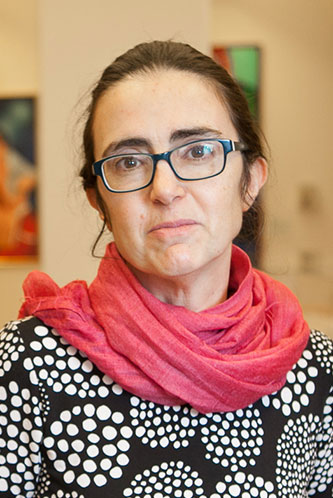Best of BC, Faculty Voices: MLK’s Image Is “Clouded by Myth” Says Political Science Professor Jeanne Theoharis
Jan. 15, 2021

Jeanne Theoharis
Two of the myths are that he criticized Northern racism, and that more than 70 percent of Americans in his time disapproved of him.
Jeanne Theoharis, distinguished professor of political science, and author of The Rebellious Life of Mrs. Rosa Parks and co-editor of Julian Bond’s Time to Teach: A History of the Southern Civil Rights Movement, is working to set the record straight on some misconceptions about Martin Luther King Jr. and reveals surprising facts about the civil rights leader.
What sparked your interest in studying and later teaching political science, and civil rights history in particular?
I was an activist as a high school student and had the great fortune in college to take a class with Julian Bond, who was one of the founders of the Student Nonviolent Coordinating Committee. So much of how I teach the civil rights movement today—the details, the attention to how it happened, the central role young people played in pushing it forward, the key leadership of so many women—stems from how he taught it.
Given the recent civil unrest in America, what are the basic lessons people can take from Martin Luther King Jr.?
I think one of the most misunderstood aspects of King is a misappropriation of his quote “the arc of the universe is long but it bends towards justice.” This is a religious idea—that God is a God of justice not just in the next life but here on earth. But it’s been used to mean that King saw this country as naturally, inexorably getting better and more just—and that’s deeply inaccurate. Across his life, King called out this “myth of time”—he attacked this idea that America was naturally progressing. Progress only happened when people pushed for it, insisted on it, put themselves on the line for it. As he put it, “time is neutral, it can be used either constructively or destructively. And I’m absolutely convinced that in so many instances the forces of ill will in our nation, the extreme righteous of our nation have used time much more effectively than the forces of good will.”
5 Myths of the Civil Rights Movement
What are some little-known facts about Martin Luther King Jr.?
We typically associate King only with the South, but my new research focuses on his critique of Northern racism and his challenge to Northern White liberals who supported change in the South but refused to in the North. He came to New York City many times in the late 1950s and 1960s.
In 1963, he gave the commencement speech at City College—where fewer than three dozen of the 2,800 students graduating that day were Black. In other words, in the heart of Harlem, the city’s flagship public college was almost completely White.
King looked out on that sea of White that day and made clear that the “de facto segregation of the North was as injurious as the legal segregation of the South.”
King called for a Civilian Complaint Review Board of the police in 1964. He supported the 1964 school boycott in New York City, which challenged the city to come up with a comprehensive plan for desegregation—a boycott criticized by the Board of Education, The New York Times, and many other White New Yorkers. Writing in the Amsterdam News in 1964, King made clear: “School boycotts have punctured the thin veneer of the North’s racial self-righteousness.”
People now claim that they would have been with King 50 years ago—yet most Americans didn’t support the civil rights movement when it was happening. King and the movement made people uncomfortable because they disrupted the comfort of the status quo to highlight the inequalities that needed to be addressed. In a Gallup Poll right before the March on Washington in 1963, only 23 percent of Americans had a favorable view of the proposed civil rights march. In 1966, 72 percent of Americans had an unfavorable view of King.
How do you use the lessons of Martin Luther King Jr. in teaching students?
I teach a class on the civil rights and Black Power movements and another on women in the Black freedom struggle. In both of these classes, I try to get students to unpack the myths and fables that have grown around the civil rights movement and heroes like King and Rosa Parks. Parks similarly has been honored but trapped in that one moment on the bus. She’s been rendered quiet, meek, passive, middle-class. The actual Parks was a lifelong freedom fighter who challenged the injustices of the criminal justice system, believed in reparations, opposed the Vietnam War and South African apartheid, called Malcolm X her personal hero, and held out her greatest hope in the spirit and militancy of young people. On that evening on the bus, Parks actually challenged the police officers arresting her, “Why do you push us around?”
How do you plan to celebrate Martin Luther King Jr. Day?
One of the ways that I always try to observe Martin Luther King Jr. Day is to return to his actual writings. Much of our image of King is clouded by myth and romanticism, and so it’s essential to repeatedly sit with King’s actual words. The three pieces of King that I regularly teach and recommend people read every single year are his “Letter From a Birmingham Jail”; his speech from Riverside Church against the Vietnam War, “A Time to Break the Silence”; and the speech that he gave in many cities in 1968 highlighting the interconnection of poverty and racism, “The Other America.”






